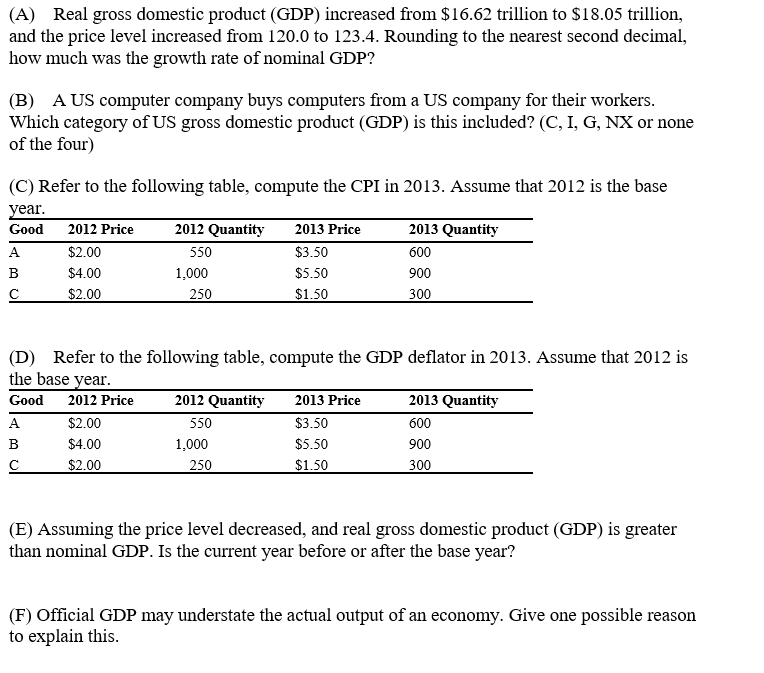Gross domestic product equals 1.2 trillion – Gross domestic product (GDP) equals 1.2 trillion, a figure that holds immense economic significance and paints a vivid picture of a nation’s economic health. GDP serves as a comprehensive measure of economic activity, encompassing the total value of all goods and services produced within a country’s borders over a specific period, typically a quarter or a year.
This economic barometer provides invaluable insights into a country’s economic growth, living standards, and overall well-being.
The components of GDP, namely consumption, investment, government spending, and net exports, each play a crucial role in shaping the overall economic landscape. Consumption, the largest component, represents household spending on goods and services. Investment, another significant contributor, encompasses spending on new capital goods and inventories.
Government spending, including public infrastructure and social welfare programs, also influences GDP. Net exports, the difference between a country’s exports and imports, reflect international trade activities.
Economic Significance of Gross Domestic Product (GDP)

Gross Domestic Product (GDP) is a comprehensive measure of the economic activity of a country or region. It represents the total value of all goods and services produced within a specific period, typically a quarter or a year. GDP serves as a fundamental indicator of economic growth, living standards, and policy decisions.
GDP is calculated by adding up the values of consumption, investment, government spending, exports, and subtracting imports. These components provide insights into the different sectors driving economic activity.
Components of GDP: A Breakdown

| Consumption | Investment | Government Spending | Net Exports |
|---|---|---|---|
| Household spending on goods and services | Spending on capital goods, such as machinery and equipment | Government expenditure on public services, infrastructure, and salaries | Exports minus imports |
| Accounts for approximately 60-70% of GDP | Typically 15-20% of GDP | Varies depending on government policies and economic conditions | Positive when exports exceed imports, negative when imports exceed exports |
GDP as a Comparative Measure
GDP allows for comparisons of economic performance across countries or regions. It provides a standardized metric to assess the size and growth of economies. However, it’s important to note that GDP alone does not fully capture economic well-being.
Other economic indicators, such as the Human Development Index (HDI) and the Gross National Income (GNI) per capita, complement GDP analysis by providing insights into factors like education, health, and income distribution.
Factors Influencing GDP Growth

GDP growth is influenced by various factors, including:
- Technological advancements:Innovations and new technologies can increase productivity and output.
- Labor productivity:Improvements in labor skills and efficiency contribute to higher production levels.
- Investment:Capital investment in machinery, infrastructure, and education boosts economic capacity.
- Government policies:Fiscal and monetary policies can stimulate or hinder economic growth.
GDP and Economic Forecasting
GDP data is crucial for economic forecasting and modeling. It provides a basis for predicting future economic trends and assessing the impact of policy decisions.
Methods like time series analysis and econometric models are used to forecast GDP. These forecasts inform business decisions, investment strategies, and government planning.
FAQ Section: Gross Domestic Product Equals 1.2 Trillion
What is the significance of GDP?
GDP serves as a comprehensive measure of a country’s economic activity, providing insights into its economic growth, living standards, and overall well-being.
What are the major components of GDP?
The primary components of GDP include consumption, investment, government spending, and net exports.
How is GDP used in economic forecasting?
GDP data is utilized in economic forecasting and modeling to predict future economic trends and inform business decisions and policymaking.
